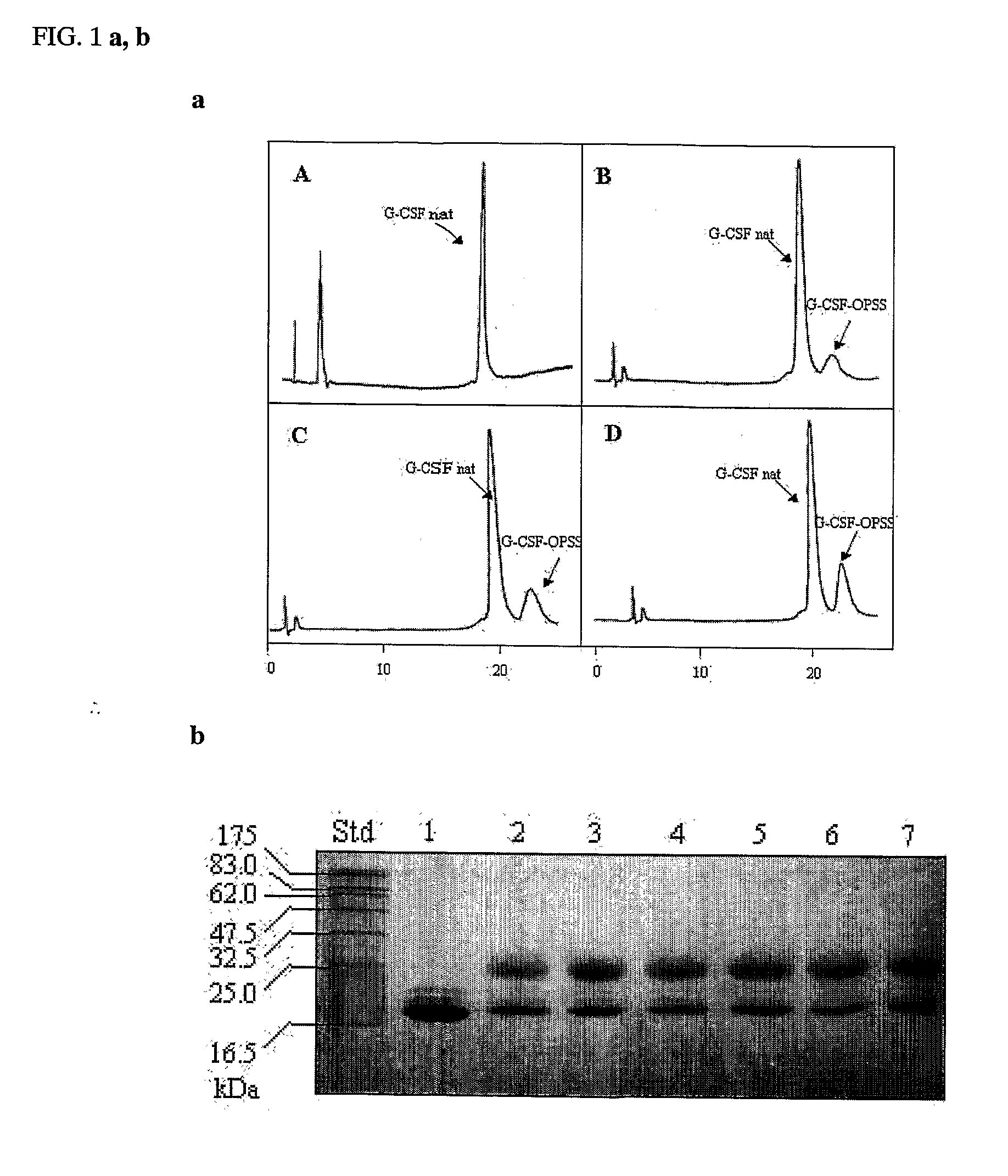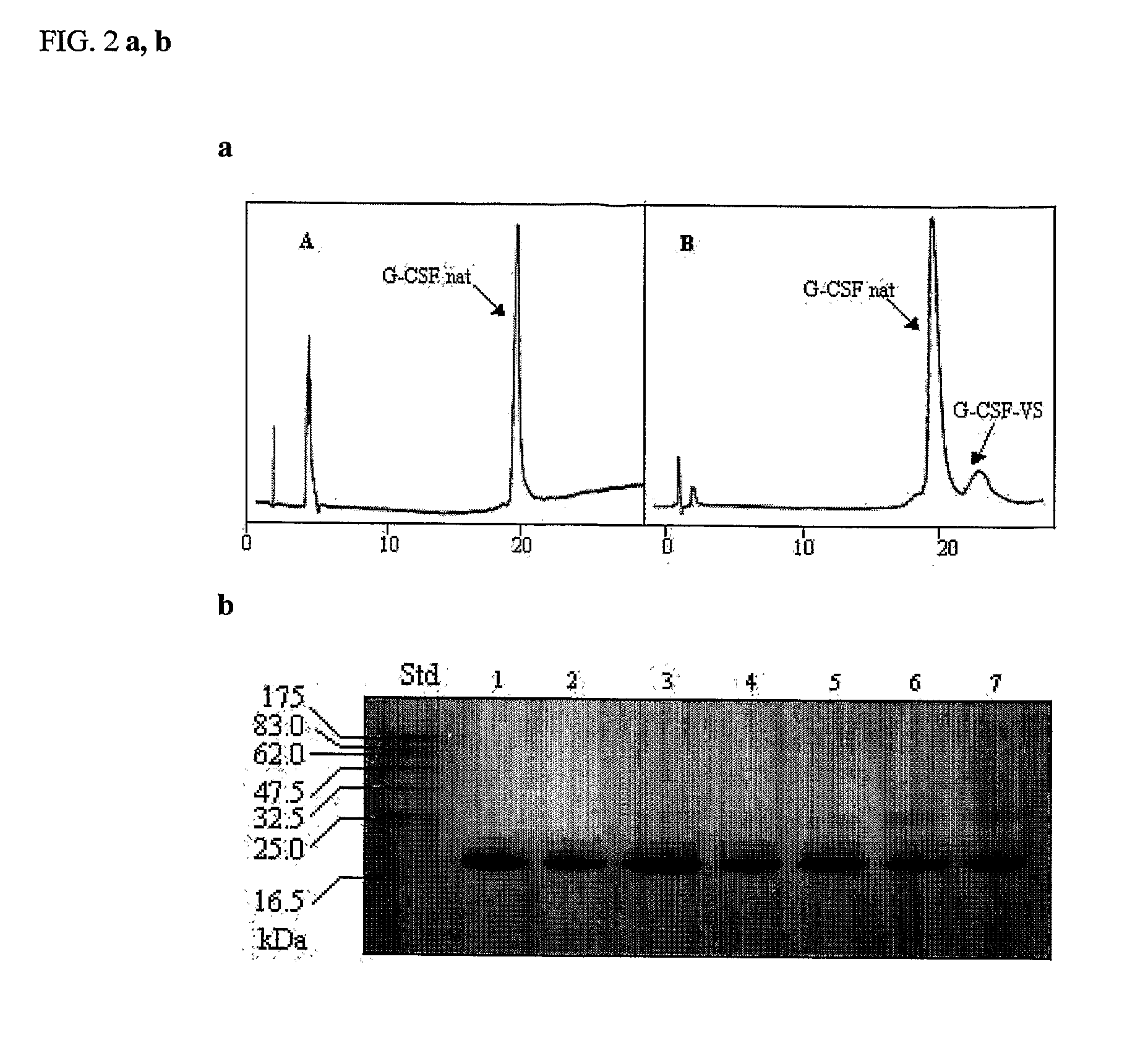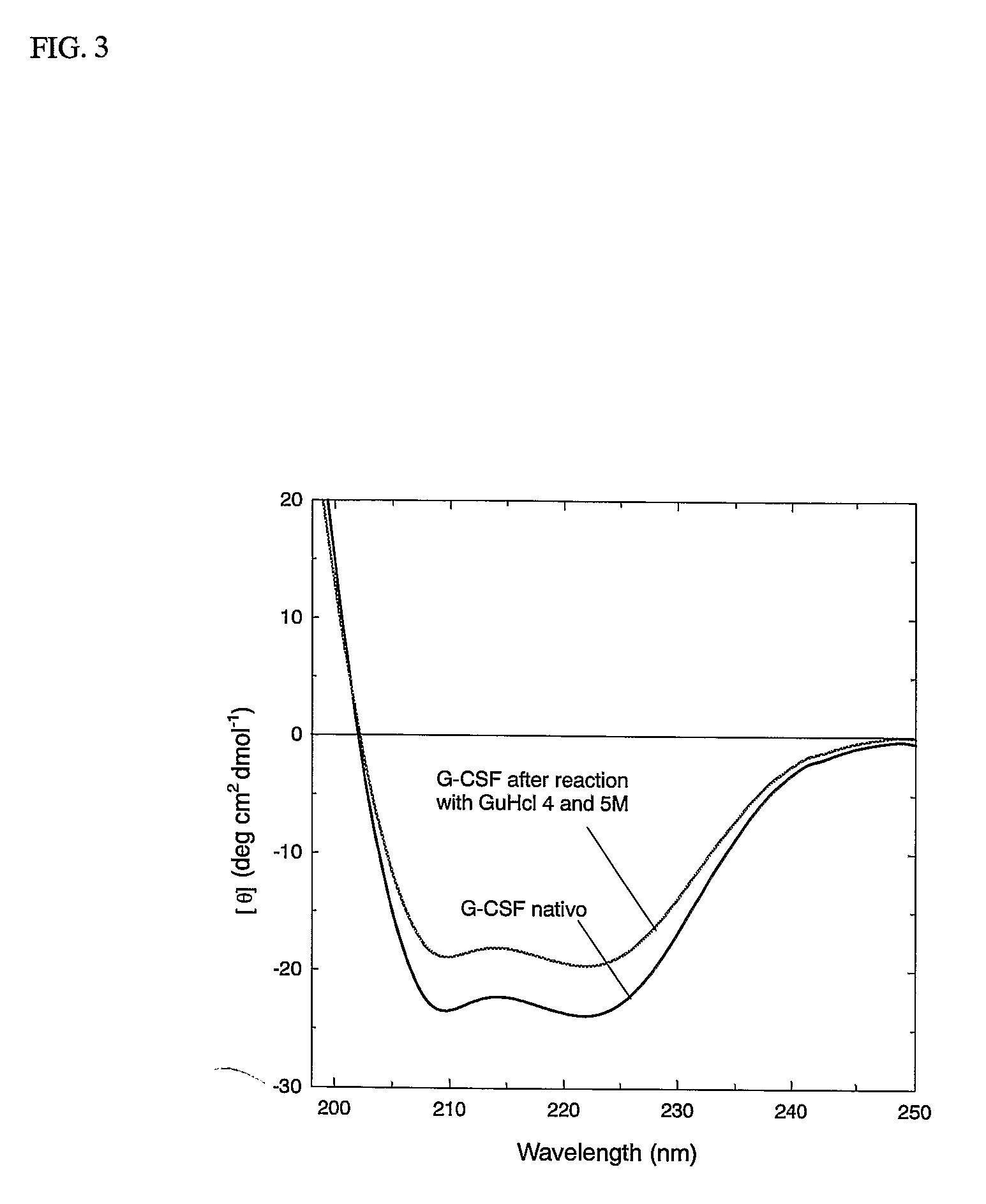Novel g-csf conjugates
a technology of conjugates and g-csf, applied in the field of new g-csf conjugates, can solve the problem of limit the short half-life in the body, and achieve the effect of simplifying the mixture of products and selective conjugation
- Summary
- Abstract
- Description
- Claims
- Application Information
AI Technical Summary
Benefits of technology
Problems solved by technology
Method used
Image
Examples
example 2
Reversible Denaturation of rhG-CSF
[0110] Guanidine HCl 8M in phosphate buffer 0.1 M, pH 7.27 were added at different amount to a rh-GCSF buffer solution in order to reach a final concentration of 2, 4 e 5 Molar. After 4 hours incubation at room temperature the mixture was dialyzed against an aqueous acidic solution, to remove the denaturant and to reach the G-CSF stable condition of pH 3.5.
[0111]FIG. 3 reports the CD spectrum of the starting proteins and after the denaturation-renaturation process. The regain of the secondary structure is evident from the 220-208 mm ellypticity ratio of before and after treatment. The following experiment demonstrates that G-CSF may be subject to denaturation and renaturated to the original structure.
example 3
Preparation of 5 kDa PEG rhG-CSF Conjugate by Thiol Reagents in Denaturant Conditions
Conjugation of 5 kDa PEG-OPSS and PEG-VS to rhG-CSF.
[0112] 3a: To a G-CSF buffer solution Tris 0.5 M, 6 M Urea, pH 7.2 was added in order to reach a final concentration of 3 M urea. To this solution MPEG-OPSS or mPEG-VS were added at a molar ratio of 10 moles of reagent per mole of protein. The reaction was allowed to proceed at room temperature for 6 hours and stopped by 0.1 N HCl addition. [0113] 3b: G-CSF was added to a solution of 8 M Guanidine HCl in phosphate buffer 0.1 M, pH 7.27, to have a final denaturant concentration of 2, 4, 6M. The denaturated G-CSF was added to PEG-OPSS or PEG-VS solution in order to reach molar ration of 10 moles of reagents per mole of protein. After 4 hours at room temperature the reaction was stopped with HCl 0.1 N.
example 4
Characterisation of 5 kDa PEG Conjugated to rh-G-CSF
[0114] 1. RP-HPLC Chromatography.
[0115] The reaction mixture was analysed by reverse phase HPLC using a C4 Vydac column according to the following elution condition. Eluent A, 0.05% TFA in water, and B, 0.05% TFA in acetonitrile. The following linear gradient was used: 40% B for 4 minutes, up to 70% B in 18 minutes, 95% B in 2 minutes, stay at 95% B for 6 minutes and than 40% B in 2 minutes. The flow was 0.8 ml / min and UV lamp at 226 nm.
[0116]FIG. 4A shows the chromatogram of the native G-CSF. FIG. 4B shows the formation of the conjugate (PEG-OPSS) using urea as denaturant. FIGS. 4C, D, E show the formation of the conjugate (OPSS) in different reaction condition, namely in FIG. 4C the amount of guanidine HCl was 2 M, in 4D, 4M, and in 4E, 6M. As it possible to see in FIG. 4C-E the percentage of conjugate is increased following the concentration of guanidine. FIGS. 5B, C, D show the formation of the conjugate (PEG-VS) respectivel...
PUM
| Property | Measurement | Unit |
|---|---|---|
| MW | aaaaa | aaaaa |
| MW | aaaaa | aaaaa |
| pH | aaaaa | aaaaa |
Abstract
Description
Claims
Application Information
 Login to View More
Login to View More - R&D
- Intellectual Property
- Life Sciences
- Materials
- Tech Scout
- Unparalleled Data Quality
- Higher Quality Content
- 60% Fewer Hallucinations
Browse by: Latest US Patents, China's latest patents, Technical Efficacy Thesaurus, Application Domain, Technology Topic, Popular Technical Reports.
© 2025 PatSnap. All rights reserved.Legal|Privacy policy|Modern Slavery Act Transparency Statement|Sitemap|About US| Contact US: help@patsnap.com



